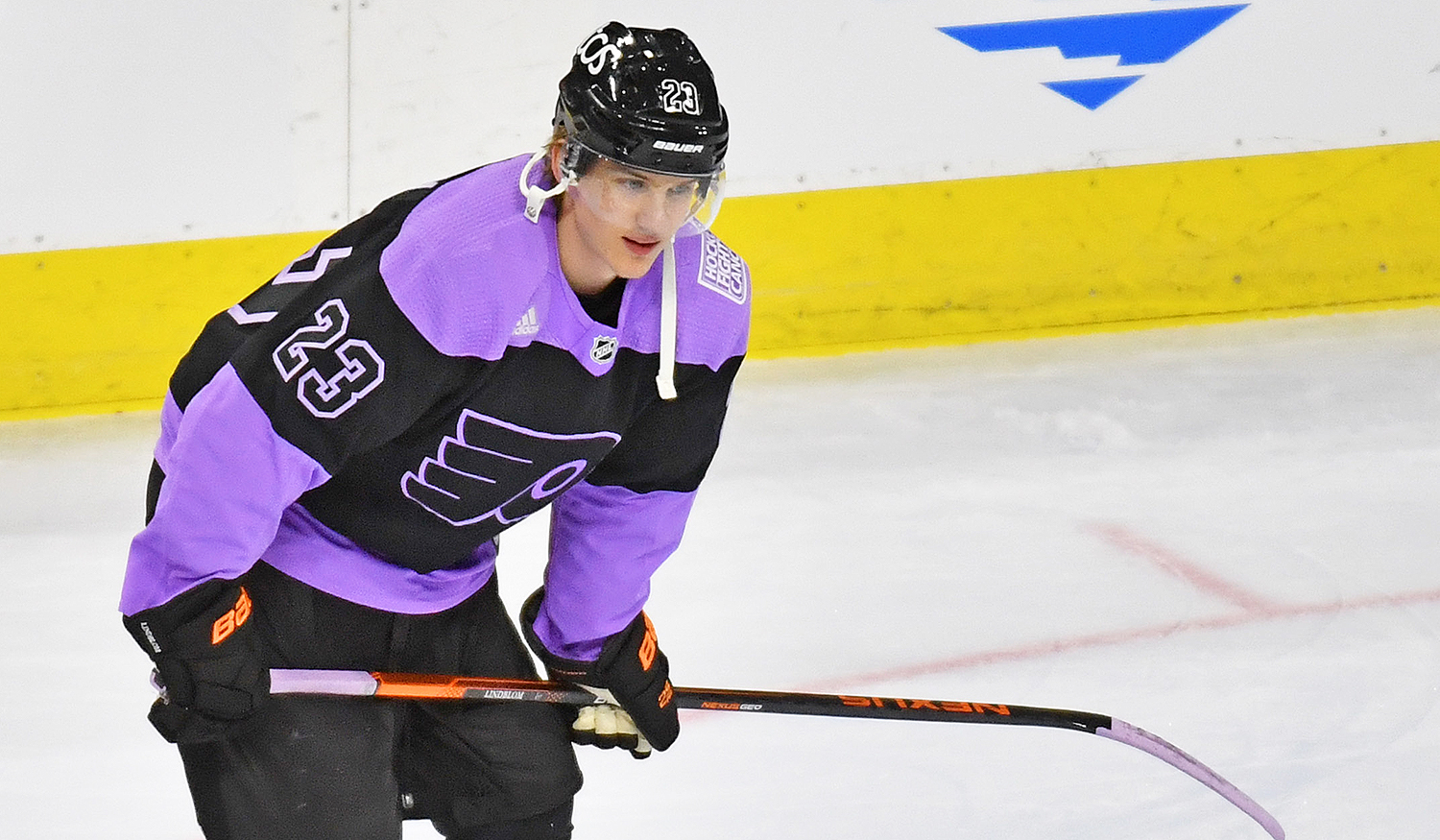
It is arguably the most feared power-play unit in the National Hockey League.
The Sedin twinsDaniel and Henikwith fellow Swede Mikael Samuelsson, plus Alex Burrows and lone defenseman Alexander Edler.
Seven times on Wednesday night, the Vancouver Canucks had their deadly first-unit power play out there against the Flyers.
Twice, the Canucks scored.
In the battle of special teams, when youre 2 for 5 on the power play, thats a win because its 40 percent accuracy versus just 71 percent penalty killing.
Now heres the rub: The usually aggressive Flyers penalty-killing units were far more cautious against Vancouver than in their previous two games against Boston and New Jersey.
The reason? Its obvious: the Canucks superior passing skills. In essence, the Flyers gave them too much respect, backing off for two periods.
I mean, you have to be careful with those guys, Claude Giroux said. You have to play smart and theyre obviously pretty good at finding both lanes. But at the end of the game, we did a great job of shutting them down and our Ds were solid.
Giroux, Max Talbot, Chris Pronger and Kimmo Timonen form the Flyers first PK unit.
The second unit consists of Andreas Nodl, Matt Read, Braydon Coburn and Andrej Meszaros with Talbot often replacing one of the forwards for an extended shift.
Talbot logged the most shorthanded minutes during the Flyers 5-4 victory Wednesday night, with 9:02 ice time. Timonen led the defense with 9:05.
If you were surprised to see the Flyers back off from the Sedinscausing the Flyers to virtually get mesmerized by the Canucks passingwell, it happens. Vancouver is that good.
Well, you go out there with the Sedins, Talbot replied when asked why the Flyers were tentative. There are reasons. If you press them, they will beat you with a pass and get an open scoring chance. So you have to give them respect.
Vancouver displayed some head-swivel passing in the first period before Mikael Samuelsson scored off two assists from the Sedins. No one moves pucks faster than the Canucks with an extra man on the ice.
The good news for the Flyers? Just three games into the season, Peter Laviolettes club has already seen the most lethal power play in the league and wont see it again unless they meet in the Stanley Cup Final.
Laviolette suggested there were a lot of things to digest off the tape that should help the Flyers PK units down the road against other clubs.
Talbot ranked the Sedins as the best 1-2 power play combination in the NHL. He also said to win five times was a minor victory for the Flyers.
The hard part, he said, was that Vancouver was so good with its passes that if you made a move toward, say, Burrows, the puck was already gone off his stick to one of the Sedins. By then, it was too late.
Vancouvers passing was so crisp, even goalie Ilya Bryzgalov was twice caught on one side the net with the shot coming from the other almost instantaneously.
The Flyers had to kill off five penalties in the third period. Vancouver scored once. Yet by then, the Flyers seemed to be a bit more aggressive in pinching from the sides and applying pressure up high.
It depends on the situation, Laviolette said about being more aggressive. Once we got a couple looks at it, we understood it a little bit better as to when we could go press and when we couldnt go.
I dont think you can just attack randomly. Its got to be at the right times. There were some adjustments made based on what we were seeing and they were doing. I thought the penalty killers stuck with it and did a good job.
Vancouver is a talented group that moves around a lot. There are seams that needed to be covered and some of them opened up and were exposed early. When that happens, you hope it doesnt happen again. We did a better job covering those seams.
Initially, the seams were clean shots from the high slot and point, not to mention a couple on the outer edges of the circles closest to the net.
By the third period when the Flyers got themselves in trouble with penalties, their penalty-killing units had covered the seams better, blocked more shots, and picked up the open man.
When youre on the penalty kill and the other team moves the puck that well and has full control and theyre set up, for the most part, it plays into their hands if you are overly aggressive, said Braydon Coburn, who is on the second unit PK.
You want to bait them into some sort of mistake where you can jump them. Then start applying your pressure and get them to run around a bit. But when those guys have full control, its a lot tougher to be more aggressive.
On Saturday, the Flyers host Los Angeles, whose power play has all of the Kings top guns on itAnze Kopitar, ex-Flyer Mike Richards, Dustin Brown, Jack Johnson and Drew Doughty.
L.A. is actually ranked higher in power play efficiency (28.6 percent) than Vancouver but thats because the Kings have had just seven power play opportunities (two goals) in only two games played.
Laviolette would prefer to roll four lines and not have so many of his players sitting on the bench late in games because the penalty-kill unit is being taxed.
Talbot said the one benefit of all this shorthanded work is, Were gonna be better at it, by being shorthanded so much, he said. But at the same time, you dont want to be shorthanded.
If nothing else, the Flyers already seem used to it.
E-mail Tim Panaccio at tpanotch@comcast.net


